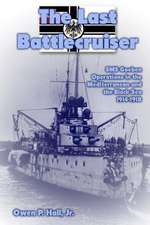Significant Milestones in Air Force History
Autor Phillip S. Meilinger, United States Air Forceen Limba Engleză Paperback
Preț: 99.36 lei
Nou
Puncte Express: 149
Preț estimativ în valută:
19.01€ • 19.90$ • 15.82£
19.01€ • 19.90$ • 15.82£
Carte disponibilă
Livrare economică 10-24 martie
Preluare comenzi: 021 569.72.76
Specificații
ISBN-13: 9781477547571
ISBN-10: 1477547576
Pagini: 64
Dimensiuni: 152 x 229 x 3 mm
Greutate: 0.1 kg
Editura: CREATESPACE
ISBN-10: 1477547576
Pagini: 64
Dimensiuni: 152 x 229 x 3 mm
Greutate: 0.1 kg
Editura: CREATESPACE



















